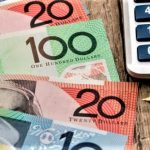Gold price rises for the fourth straight day, reaching a new all-time high.
The gold price (XAUUSD) extends its recent rally and rises above the $2,700 level, setting a new record high during the Asian session on Friday. Major central banks have been lowering interest rates and anticipated to loosen monetary policy further. This, together with persisting geopolitical risks arising from ongoing conflicts in the Middle East and uncertainty around the US Presidential election turn out to be important reasons driving flows into precious metals.
Major central banks continue to decrease interest rates, which benefits the non-yielding XAUUSD.
US Dollar (USD) fall from its highest level since early August, reached on Thursday, provides additional support to the Gold price. Meanwhile, traders no longer anticipate another significant interest rate decrease by the Federal Reserve (Fed) in November, which had been a main driver of the recent increase in US Treasury bond yields. This, in turn, should help minimize any significant USD corrective slide and discourage traders from putting new bullish wagers on the non-yielding yellow metal.
Daily Market Movers: Gold prices continue to attract buyers notwithstanding rate cuts by major central banks.
On Thursday, the European Central Bank opted to drop interest rates for the third time this year, marking the first back-to-back rate cuts in 13 years, and plans future cuts in response to the deteriorating economic outlook.
The Federal Reserve also expected to decrease borrowing costs further following a big rate cut in September, while dismal inflation data in the UK has strengthened betting on a more aggressive lowering by the Bank of England.
Meanwhile, the tight contest between Donald Trump and Kamala Harris increases uncertainty, which, along with the potential of further escalation of Middle Eastern conflicts, drives the gold price to a new all-time high.
The Israeli military confirmed that Hamas leader Yahya Sinwar was killed on Wednesday, following a “year-long
pursuit,” while Iran-backed Hezbollah proclaimed a new and more aggressive phase in its conflict with Israel.
The US Census Bureau said on Thursday that retail sales climbed by 0.4% in September, exceeding market estimates of a 0.3% monthly gain and a 0.1% increase the prior month.
Separately, the US Labor Department announced that initial jobless claims declined to 241K in the week ending October 12, compared to the expected estimate of 260K.
Furthermore, the Philadelphia Federal Reserve’s manufacturing sector survey found that the business conditions index increased from 1.7 to 10.3 in October, above consensus expectations by a large margin.
The figures suggested that the economy remains healthy. footing and reiterated predictions on a less aggressive Fed policy easing, rising US government yields and the US dollar while doing little to reduce demand for the XAUUSD.
Markets respond little to the latest Chinese macro figures.
Meanwhile, markets respond little to the latest Chinese macro figures, which reveal that the world’s second-largest economy grew by 0.9% in the third quarter of 2024, with an annual growth rate of 4.6%.
Traders are now looking to the US housing market data – Building Permits and Housing Starts – as well as Fed Governor Christopher Waller’s anticipated speech to find short-term opportunities on the week’s last day.









